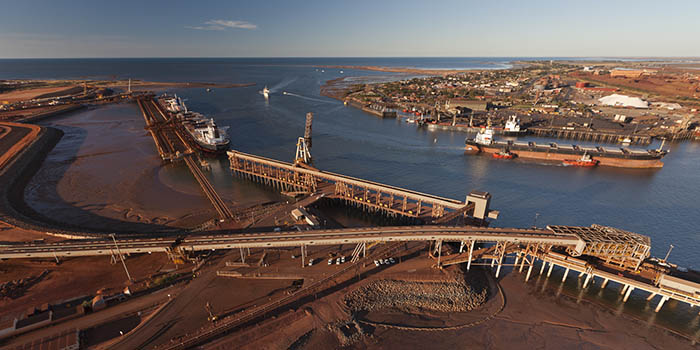Australia’s exports of goods and services surpassed A$400 billion (US$295 billion) for the first time in the 2018 financial year to end June, with resources making up the majority of sales.
Data from the Australian Bureau of Statistics showed resources exports – including minerals, metals, coal and petroleum – were a record high A$220 billion in the 12-month period. This was a 11% rise from the previous year due to higher exports of coal, gold, base metals and LNG.
Despite lower prices, iron ore remained Australia’s largest source of export revenue with A$61.4 billion shipped.
Coal exports were only just behind, reaching a new record high of A$60.1 billion – up 11%, or A$5.9 billion, from the previous year.
Gold exports, including mined and refined yellow metal, set another record for export values with A$20.1 billion of the precious metal shipped in the 12-month period. This is the first time in Australia’s history gold exports have exceeded $20 billion, showing just how important the weak Australian dollar – relative to the US dollar – has been to the sector’s resurgence.
Exports of base metals and other minerals showed strong growth as a result of higher commodity prices and totalled $38 billion in 2017-18, also a record high.
The Minerals Council of Australia said this resources export revenue was delivering benefits to all Australians.
“The minerals industry and mining equipment, technology and services sector continue to provide high-paying jobs for more than one million Australians, particularly those in regional areas,” the MCA said.
“And, Australia is also poised to seize future opportunities for minerals resources that will come from growth in new consumer, energy and transportation technologies around the world.”
Australia has extensive resources of the rare earth elements, base metals, lithium and precious metals that are essential materials in smart phones, electric vehicles, modern energy systems and industrial machinery, according to the MCA.
“This means maintaining a competitive minerals sector is essential for Australia’s continuing economic prosperity, jobs and regional communities.”











